It’s never too early to get your child thinking about what it means to be sustainable. Pre-school, in fact, is the perfect time to start this conversation; when your child is open, understanding, receptive and, most importantly, creative. Not only does this time window provide an opportunity to instill sustainable values that can carry through for your child’s whole life, it’s also a fun time to get creative with it!
How to teach sustainability to a toddler
Sustainability is a vast, seemingly all-encompassing topic. It covers everything from carbon emissions to food waste to toxic chemicals to pollution...and more. How do you get a young child to understand all of that?
Well the good news is you don’t need to teach a class on it. Rather, you can engage them in fun activities that may get them thinking about what it means to live a sustainable life. Incorporating these ideas into playtime or even everyday life will begin to ingrain values of conscious consumerism and waste-free living.

For these activities, it’s important - and more tangible - to focus on the aspects of sustainability that we can control.
You’re not going to take your preschooler lobbying for stricter carbon regulations. But you can help them understand the lifestyle elements that they have the power to choose for themselves, while instilling a sense of responsibility and love of the planet. This means things like thinking about consumption, learning about recycling and composting, reusing materials in a fun and useful way, growing a garden, and choosing to bike or walk over driving.
Let’s explore some fun ways to engage your preschooler in sustainability. You can browse this fun list of ideas by sustainability topic.
Recycling, “Up-cycling” and Composting
Create a compost
Composting is essentially helping your food scraps decompose into hyper-rich soil by controlling and speeding up a natural decomposition process.
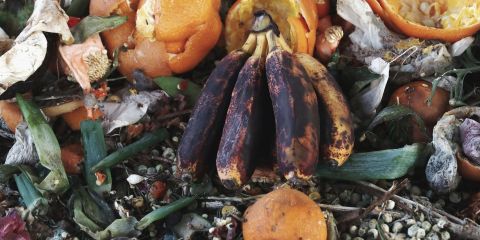
Turning your food waste into dirt is a really tangible way to teach your preschooler about how “trash” can become something not just valuable, but vital.
You can create a compost outside by building a pile of food waste. Locate a good site in your yard to start off - this should be an area that gets moderate light - which keeps it warm for quicker decomposition - and has easy access to water so that you can keep it moist, which also accelerates the process.
Fence in a small area to start it off, or repurpose a wooden box or drawer, and then just start throwing your food scraps into it.
You'll want to ‘layer” your compost with different, diverse types of organic scraps, and then “turn” it regularly to make sure everything is decomposing. There are great blogs on composting strategies if this is a project you want to undertake with your child.
Start a worm bin
A worm bin is a particular type of composting that your creepy-crawly-loving preschooler might find especially fun! Repurpose a large, plastic storage bin, a dresser drawer, wooden box, fish tank, you name it -- into a mini dirt factory.
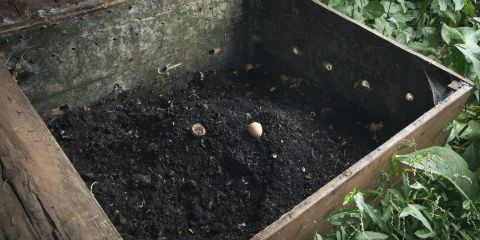
Tear up sheets of newspaper (around 50), add a few cups of soil to get healthy microbes in the mix and slightly moisten the whole pile to create a fluffy, rich environment.
Then, add the earth worms and some food scrap nutrition for them to get to work on. On top, add a few more sheets of dry newspaper to seal in the moisture.
You’ll want to feed the worms your food scraps every week, and as they eat through the food, they’ll produce dirt!
This a really dynamic way to teach your preschooler about composting while also finding a way to play in the dirt - what kid doesn’t love that? Lots more information on composting with worms.
Repurposing arts and crafts
You may have heard the term “up-cycling,” which essentially just means turning your waste into something new and useful and even beautiful. Up-cycling offers a variety of fun craft projects to undertake with your preschooler, while catalyzing conversations about the importance of reusing materials and stirring up their creativity.
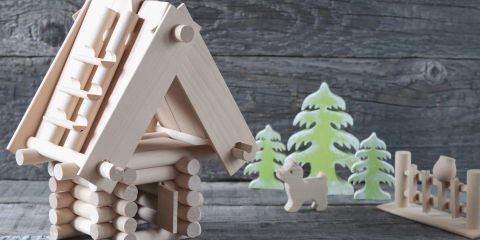
Here are a couple of ideas:
- Start a recycled “band”: Fill old toilet paper rolls with dried beans and rice for a fun rain-noise maker; cut a hole in a cereal box or tissue box and string old rubber bands across it for a make-shift guitar, make small drums by stretching an old balloon over an empty can with a rubber band.
- Make collages out of old magazines. Get colorful and creative with fun words and images! This is a fun activity that also doubles as a lesson in reading.
- Create your own puzzle! This is a great way to reuse cereal boxes or other pieces of cardboard with fun and colorful designs. Simply cut up the side into puzzle pieces for an activity that will keep your preschooler engaged.
- Turn your empty milk carton into a bird feeder: Cut an opening in the milk carton about an inch from the bottom. Poke a dowel or chopstick in beneath the opening (for the bird to perch on). Decorate, will with birdseed and hang in your yard! Not only does this teach your preschooler how to effectively reuse materials, it also can feed into a wider appreciation for the environment as you watch the birds come by.
- Regardless of the activity you choose, it’s a helpful idea to keep around this sort of miscellaneous waste - from bottle caps and corks to boxes and newspaper, you never know what might make a creative art project. This also sets an important example for your preschooler; that not everything is automatically trash and, one day, it can even become something beautiful and useful!
Food Production
Start an indoor herb garden
If you don’t have a lot of outdoor space - or are just starting out with growing food - an indoor herb garden is a really easy idea. You can easily find an indoor herb garden online.
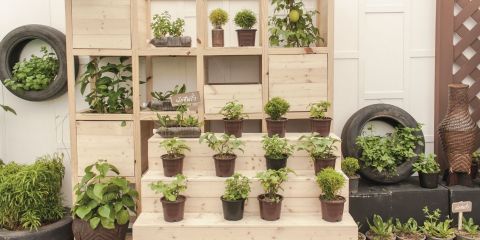
It’s typically a small contraption with space for soil, filtration and an LED light built in to help the herbs grow. Some easy herbs to grow year round include basil, bay leaves, chives, oregano, parsley, rosemary, sage, tarragon and thyme.
Get started with your favorite herbs and work with your preschooler to pick them when it’s time to cook dinner! From seed to dinner plate, herbs provide a good glimpse into food production that many people don’t think about.
It’s an important value to instill as you raise your preschooler with sustainability in mind.
Start an outdoor produce garden
If you tried that compost idea above, this is a great place to put it to use -- and then an even better jumping off point for a conversation about closed-loop food systems. Turning the food we don’t eat back into rich soil to nourish new food is a really tangible and impactful way to get this point across.
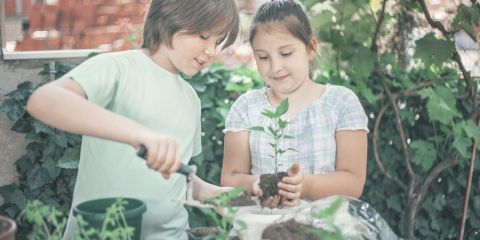
Plus, what’s more rewarding that growing something you can eat?! This activity can instill in your child a sense of appreciation for where food comes from and the work involved in nourishing it, so it can nourish us.
Cook together
Plan a meal with your preschooler. If you’re growing a produce or herb garden, it’s great to think of a meal that may incorporate some of what you’re already growing.
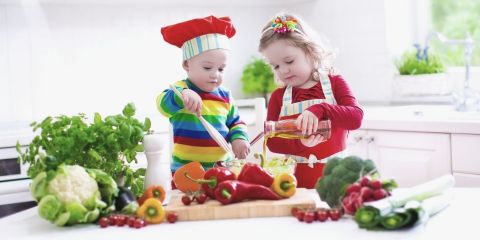
Cooking a meal from scratch demonstrates the importance of each ingredient and provides a chance to talk about where ingredients come from. Turning food you’re growing into something you can eat is additionally rewarding.
And it’s even more fun to try new recipes and get creative with the flavors!
Collect a seed bank
Many preschoolers love to “collect” things, whether that’s toys, worms, trash. Why not try collecting seeds?
Build a seed bank with your preschooler by slowly accumulating different varieties of seeds - you can typically find them at grocery stores, farmers markets, plant sanctuaries, etc.

Use each purchase as an opportunity to learn about that seed, the plant it will eventually grow, and how to care for it.
You can also craft a seedbank collection kit out of recycled boxes or even an egg carton (each compartment is for a different seed) - get creative here!
Building a seed bank over time gives your preschooler something exciting to collect while also teaching them about sustaining life.
This is an especially fun idea if you’re already building a garden together!
Caring for the Earth: Outdoor ideas
Start an outdoor garden
Tending to a garden instills in young kids a sense of care for living things like plants and animals, and serves as a great launching point to teach them about the delicate ecosystems sustaining our planet, from bees and pollination to root systems and soil enrichment.
You can also use this as an opportunity to talk about how things grow, from seed to flower, and learn how to identify different plants and animals. This is another place you can put your compost to work, too!
Make a flower arrangement
Flowers are bright, colorful and fragrant. Perfect for a preschooler to play with! If your outdoor garden is thriving, put it to use!
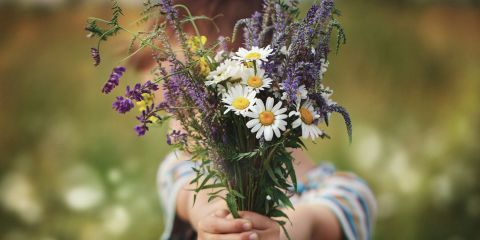
Work with your preschooler to pick out their favorite flowers, and create flower arrangements. It’s a rich and rewarding way to demonstrate nature’s beauty.
Create a scavenger hunt
Turn an educational lesson about plants and animals into a fun game for your preschooler. Make a list of native plants, birds, mammals and fungi and challenge your preschooler to find them all.

A scavenger hunt really makes kids pay attention to their surroundings in a new way, and finding items on the list will bring both excitement and an opportunity to talk about what they’re seeing.
Take them on a weekly “fun” commute
Instead of driving to school, or the library or the grocery store, try taking your preschool via other means of transit. Walk, bike, run, skip! Take a train or bus if it’s available to you.
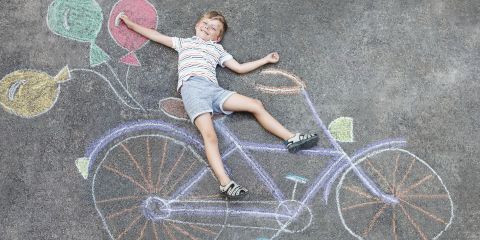
Show them there’s other ways to get around besides a car -- some of which can even be an adventure! Sometimes, the journey is just as fun as the destination.
Clean up your block
Next time you’re walking down the block, keep an eye out for trash. With gloves and a bag, gather all of the trash you see and properly dispose of it - whether that’s composting, recycling or throwing in the garbage.
Talk to your preschooler about littering while instilling a sense of duty to do his or her part to keep the streets and sidewalks clean for everyone.

